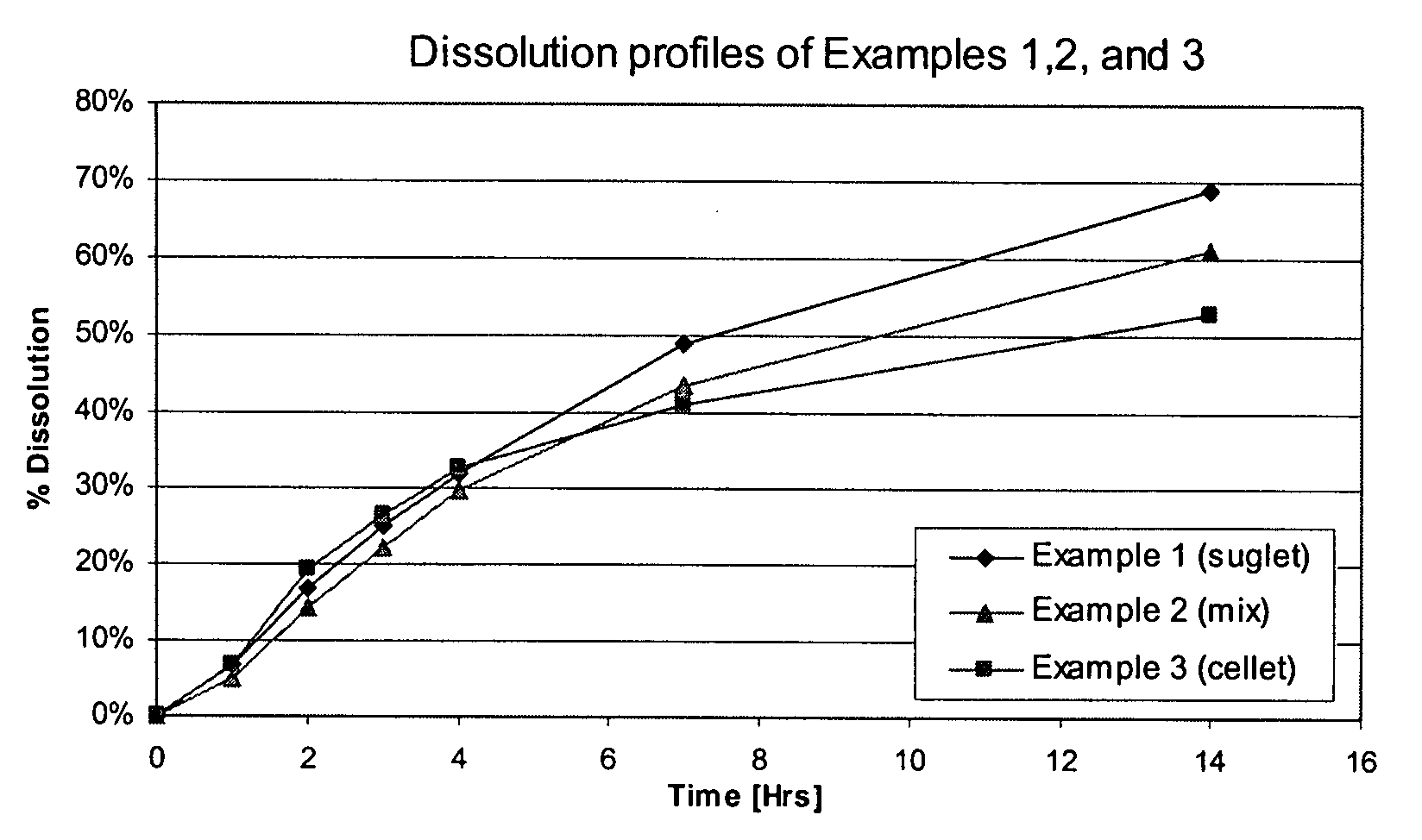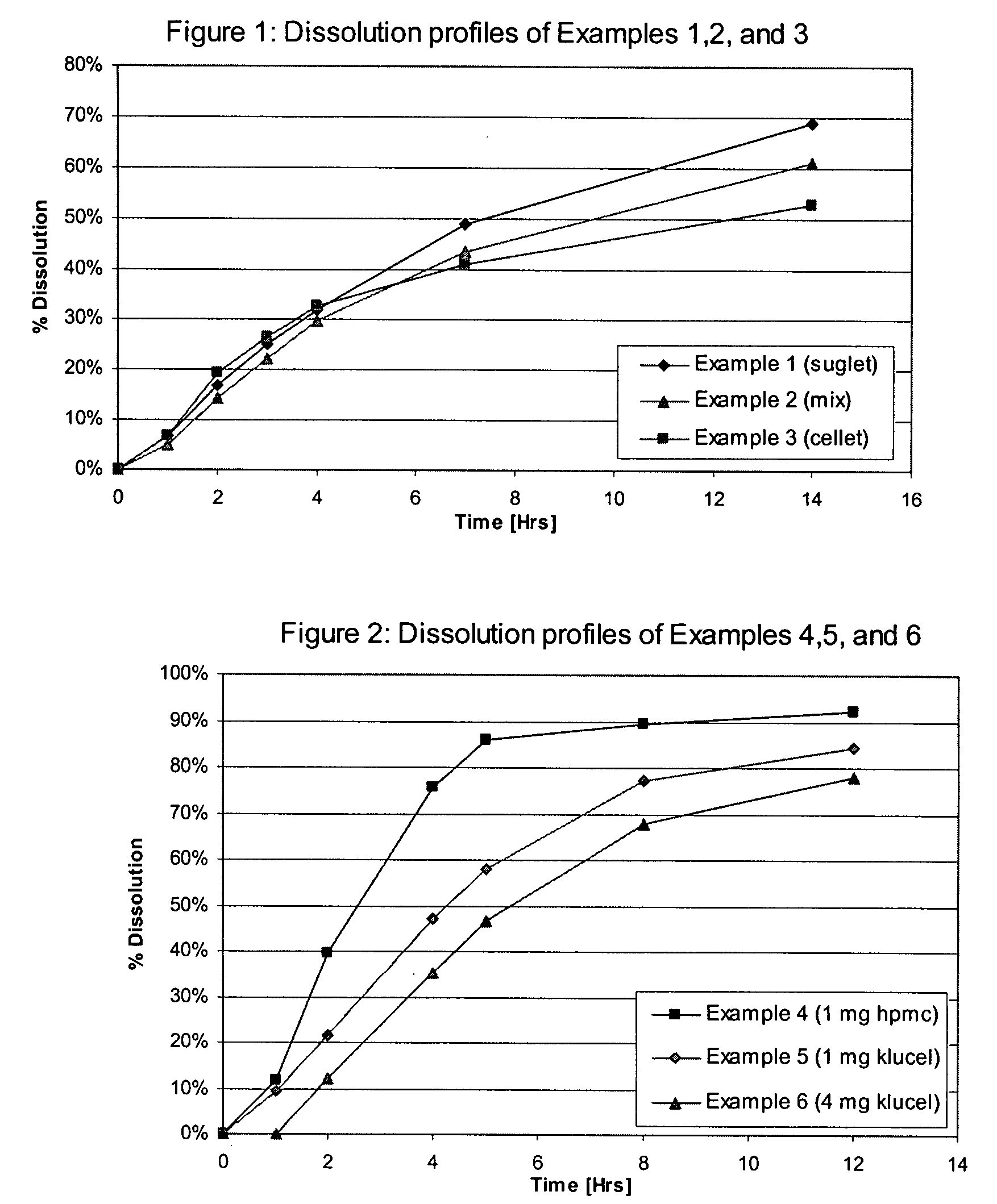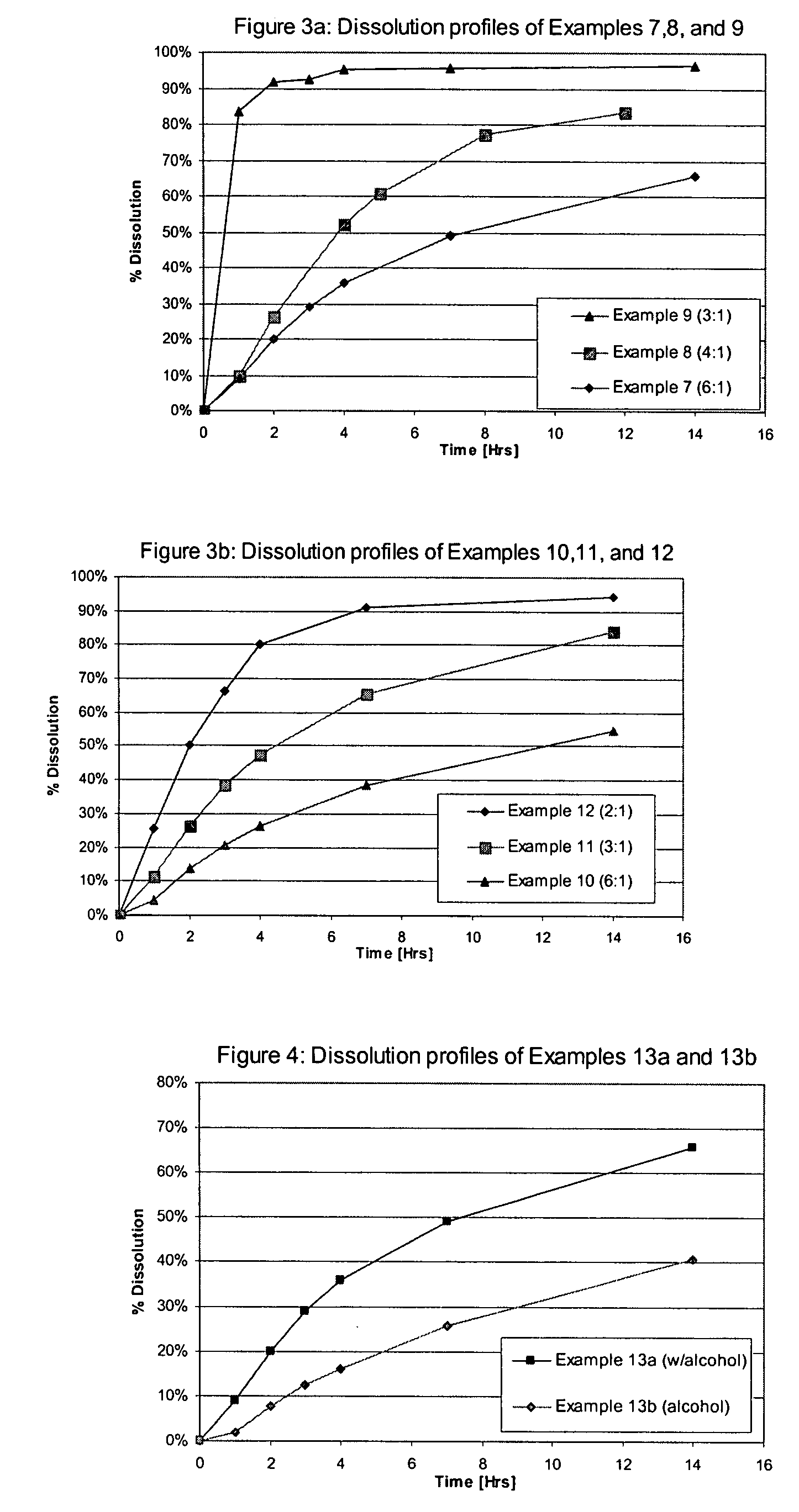Controlled release formulation of tolterodine
a technology of tolterodine and formulation, which is applied in the direction of biocide, animal repellents, drug compositions, etc., can solve the problems of unwanted migration/complexation of active ingredients, long coating process, and further lengthening production process
- Summary
- Abstract
- Description
- Claims
- Application Information
AI Technical Summary
Benefits of technology
Problems solved by technology
Method used
Image
Examples
examples 1-3
Effect of Core Composition on Drug Release Profile
[0068] Cores were charged into a fluidized bed device equipped with a Wurster column (Wurster fluid bed) and coated with a drug containing dispersion at a nominal inlet air temperature of 50° C. to 55° C. and exhaust air temperature of 30° C. to 32° C. The drug containing dispersion was made of hydroxypropyl cellulose 100 cPs (1 mg / core) in purified water mixed with micronized tolterodine L-tartrate (4 mg / core) to form a homogenous dispersion. After coating, the coated core was dried (Wurster drying) at a nominal inlet air temperature of 55° C.
[0069] The coated cores were re-charged into the Wurster fluid bed and coated with control release coating at a nominal inlet air temperature of 50° C. to 52° C. and exhaust air temperature of 30° C. to 32° C. The control release coating was made of two solutions: (1) ethylcellulose 7 cPs (25.6 mg / core) in ethanol (USP 95%), and (2) hydroxypropylmethyl cellulose 6 cPs (6.4 mg / core) dissolved ...
examples 4-6
Effect of the Composition of the Drug Containing Layer
[0071] Using the methodology described in Example 1 three sets of coated multiparticulates were prepared. In Examples 4-6 the composition of the core was kept constant and the composition of the drug containing layer was modified. In particular, the quantity of the hydrophilic polymer binder was varied. The formulation for each multiparticulate is set forth in Table 3.
TABLE 3Composition of Multiparticulates of Examples4, 5, and 6 by weight (mg).ComponentExample 4Example 5Example 6Tolterodine L-tartrate4.04.04.0Sugar spheres, 25-30 mesh93.093.093.0Microcrystalline cellulose spheres,62.062.062.025-35 meshEthylcellulose 7 cPs25.625.626.2Hydroxypropylmethyl cellulose 6 cPs6.4*7.4**6.6*Hydroxypropyl cellulose 100 cPs1.0NA4.0Total weight192.0192.0195.8
*release modifying polymer in extended release layer
**6.4 mg release modifying polymer in extended release layer and 1 mg as binder in drug layer
[0072] Multiparticulates of each form...
examples 7-9
Effect of Ratio of Components in Control Release Layer for Hydroalcoholic ER Solution
[0074] Using the methodology described in Example 1 three sets of coated multiparticulates were prepared. In Examples 7-9, the composition of the core and drug containing layer was kept constant. The ratio between ethylcellulose (extended release polymer) and HPMC (release modifying polymer) in the second layer was systematically varied from 6:1 to 3:1, respectively. The formulation for each multiparticulate is set forth in Table 5.
TABLE 5Formulation of Multiparticulates of Examples7, 8, and 9 by weight (mg).ComponentExample 7Example 8Example 9Tolterodine L-tartrate4.04.04.0Sugar spheres, 25-30 mesh93.093.093.0Microcrystalline cellulose spheres,62.062.062.025-35 meshEthylcellulose 7 cPs20.419.218.6Hydroxypropylmethyl cellulose 6 cPs3.64.85.4Hydroxypropyl cellulose 100 cPs1.01.01.0Total weight184.0184.0184.0
[0075] Multiparticulates of each formulation were dissolved at 37° C. in 0.05 M Phosphate b...
PUM
| Property | Measurement | Unit |
|---|---|---|
| Temperature | aaaaa | aaaaa |
| Fraction | aaaaa | aaaaa |
| Fraction | aaaaa | aaaaa |
Abstract
Description
Claims
Application Information
 Login to View More
Login to View More - R&D
- Intellectual Property
- Life Sciences
- Materials
- Tech Scout
- Unparalleled Data Quality
- Higher Quality Content
- 60% Fewer Hallucinations
Browse by: Latest US Patents, China's latest patents, Technical Efficacy Thesaurus, Application Domain, Technology Topic, Popular Technical Reports.
© 2025 PatSnap. All rights reserved.Legal|Privacy policy|Modern Slavery Act Transparency Statement|Sitemap|About US| Contact US: help@patsnap.com



